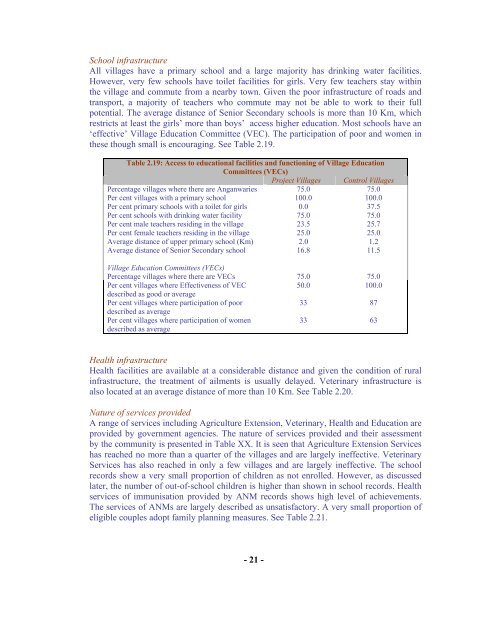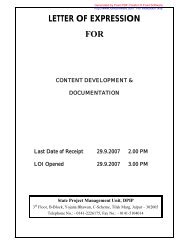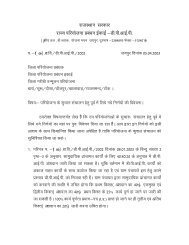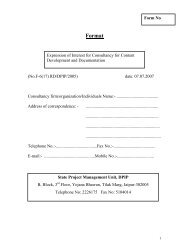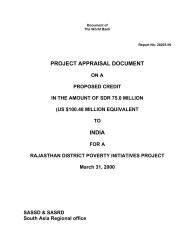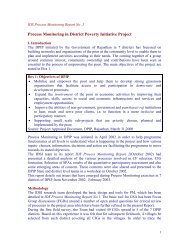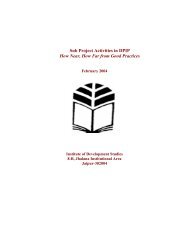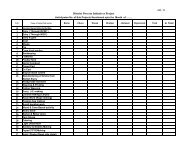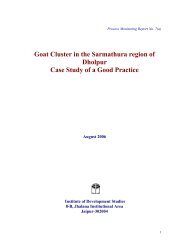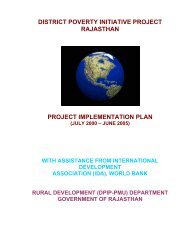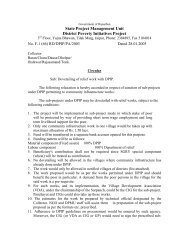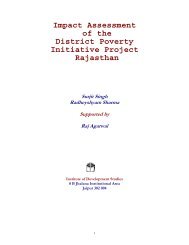Download PDF - Rajasthan Rural Livelihoods Project
Download PDF - Rajasthan Rural Livelihoods Project
Download PDF - Rajasthan Rural Livelihoods Project
You also want an ePaper? Increase the reach of your titles
YUMPU automatically turns print PDFs into web optimized ePapers that Google loves.
School infrastructureAll villages have a primary school and a large majority has drinking water facilities.However, very few schools have toilet facilities for girls. Very few teachers stay withinthe village and commute from a nearby town. Given the poor infrastructure of roads andtransport, a majority of teachers who commute may not be able to work to their fullpotential. The average distance of Senior Secondary schools is more than 10 Km, whichrestricts at least the girls’ more than boys’ access higher education. Most schools have an‘effective’ Village Education Committee (VEC). The participation of poor and women inthese though small is encouraging. See Table 2.19.Table 2.19: Access to educational facilities and functioning of Village EducationCommittees (VECs)<strong>Project</strong> Villages Control VillagesPercentage villages where there are Anganwaries 75.0 75.0Per cent villages with a primary school 100.0 100.0Per cent primary schools with a toilet for girls 0.0 37.5Per cent schools with drinking water facility 75.0 75.0Per cent male teachers residing in the village 23.5 25.7Per cent female teachers residing in the village 25.0 25.0Average distance of upper primary school (Km) 2.0 1.2Average distance of Senior Secondary school 16.8 11.5Village Education Committees (VECs)Percentage villages where there are VECs 75.0 75.0Per cent villages where Effectiveness of VEC50.0 100.0described as good or averagePer cent villages where participation of poor33 87described as averagePer cent villages where participation of womendescribed as average33 63Health infrastructureHealth facilities are available at a considerable distance and given the condition of ruralinfrastructure, the treatment of ailments is usually delayed. Veterinary infrastructure isalso located at an average distance of more than 10 Km. See Table 2.20.Nature of services providedA range of services including Agriculture Extension, Veterinary, Health and Education areprovided by government agencies. The nature of services provided and their assessmentby the community is presented in Table XX. It is seen that Agriculture Extension Serviceshas reached no more than a quarter of the villages and are largely ineffective. VeterinaryServices has also reached in only a few villages and are largely ineffective. The schoolrecords show a very small proportion of children as not enrolled. However, as discussedlater, the number of out-of-school children is higher than shown in school records. Healthservices of immunisation provided by ANM records shows high level of achievements.The services of ANMs are largely described as unsatisfactory. A very small proportion ofeligible couples adopt family planning measures. See Table 2.21.- 21 -


